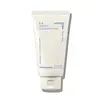What's inside
What's inside
 Key Ingredients
Key Ingredients

No key ingredients
 Benefits
Benefits

 Concerns
Concerns

 Ingredients Side-by-side
Ingredients Side-by-side

Water
Skin ConditioningGlycerin
HumectantMyristic Acid
CleansingLauric Acid
CleansingPotassium Hydroxide
BufferingStearic Acid
CleansingLauryl Hydroxysultaine
CleansingGlyceryl Stearate
EmollientGlycol Distearate
EmollientPalmitic Acid
EmollientSodium Chloride
MaskingCoco-Glucoside
CleansingRicinus Communis Seed Oil
MaskingDecyl Glucoside
CleansingSalix Alba Bark Extract
AstringentMenthol
MaskingSodium Metaphosphate
BufferingTorreya Nucifera Seed Oil
EmollientLimonene
PerfumingJuniperus Communis Fruit Oil
MaskingPinus Sylvestris Leaf Oil
MaskingJuniperus Virginiana Oil
MaskingLavandula Angustifolia Oil
MaskingCitrus Aurantifolia Oil
CleansingDextrin
AbsorbentTheobroma Cacao Extract
Skin ConditioningLinalool
PerfumingCitrus Limon Peel Oil
MaskingArtemisia Vulgaris Oil
PerfumingSalicylic Acid
MaskingPogostemon Cablin Leaf Oil
MaskingRosa Centifolia Flower Extract
AstringentCupressus Sempervirens Leaf/Nut/Stem Oil
EmollientWater, Glycerin, Myristic Acid, Lauric Acid, Potassium Hydroxide, Stearic Acid, Lauryl Hydroxysultaine, Glyceryl Stearate, Glycol Distearate, Palmitic Acid, Sodium Chloride, Coco-Glucoside, Ricinus Communis Seed Oil, Decyl Glucoside, Salix Alba Bark Extract, Menthol, Sodium Metaphosphate, Torreya Nucifera Seed Oil, Limonene, Juniperus Communis Fruit Oil, Pinus Sylvestris Leaf Oil, Juniperus Virginiana Oil, Lavandula Angustifolia Oil, Citrus Aurantifolia Oil, Dextrin, Theobroma Cacao Extract, Linalool, Citrus Limon Peel Oil, Artemisia Vulgaris Oil, Salicylic Acid, Pogostemon Cablin Leaf Oil, Rosa Centifolia Flower Extract, Cupressus Sempervirens Leaf/Nut/Stem Oil
Water
Skin ConditioningDecyl Glucoside
CleansingPumice
AbrasiveCocamidopropyl Betaine
CleansingGlycerin
HumectantVaccinium Myrtillus Fruit Extract
Skin ConditioningAcacia Senegal Gum
MaskingXanthan Gum
EmulsifyingSaccharum Officinarum Extract
MoisturisingSodium Chloride
MaskingSodium Benzoate
MaskingSalicylic Acid
MaskingSodium Hydroxide
BufferingSaccharide Isomerate
HumectantCitrus Aurantium Dulcis Fruit Extract
MaskingCitrus Limon Fruit Extract
MaskingAcer Saccharum Extract
Skin ConditioningCitric Acid
BufferingSodium Citrate
BufferingWater, Decyl Glucoside, Pumice, Cocamidopropyl Betaine, Glycerin, Vaccinium Myrtillus Fruit Extract, Acacia Senegal Gum, Xanthan Gum, Saccharum Officinarum Extract, Sodium Chloride, Sodium Benzoate, Salicylic Acid, Sodium Hydroxide, Saccharide Isomerate, Citrus Aurantium Dulcis Fruit Extract, Citrus Limon Fruit Extract, Acer Saccharum Extract, Citric Acid, Sodium Citrate
 Reviews
Reviews

Ingredients Explained
These ingredients are found in both products.
Ingredients higher up in an ingredient list are typically present in a larger amount.
Decyl Glucoside is a glucose-based surfactant and emulsion stabilizer. It is created by reacting glucose with the fatty acids from plants.
Surfactants help clean the skin by trapping oil, sebum, and dirt to be washed away. As an emulsion stabilizer, it stabilizes the ingredients in a product by preventing them from separating.
This ingredient is biodegradable and non-toxic. This ingredient is commonly found in baby shampoos.
Decyl Glucoside is sometimes used to stabilize the UV filter Tinosorb.
Learn more about Decyl GlucosideGlycerin is already naturally found in your skin. It helps moisturize and protect your skin.
A study from 2016 found glycerin to be more effective as a humectant than AHAs and hyaluronic acid.
As a humectant, it helps the skin stay hydrated by pulling moisture to your skin. The low molecular weight of glycerin allows it to pull moisture into the deeper layers of your skin.
Hydrated skin improves your skin barrier; Your skin barrier helps protect against irritants and bacteria.
Glycerin has also been found to have antimicrobial and antiviral properties. Due to these properties, glycerin is often used in wound and burn treatments.
In cosmetics, glycerin is usually derived from plants such as soybean or palm. However, it can also be sourced from animals, such as tallow or animal fat.
This ingredient is organic, colorless, odorless, and non-toxic.
Glycerin is the name for this ingredient in American English. British English uses Glycerol/Glycerine.
Learn more about GlycerinSalicylic Acid (also known as beta hydroxy acid or BHA) is a well-known ingredient for treating skin that struggles with acne and clogged pores. It exfoliates both the skin's surface and deep within the pores to help clear out buildup, control oil, and reduce inflammation.
Unlike AHAs (alpha hydroxy acids), salicylic acid is oil-soluble. This allows it to penetrate into pores which makes it especially effective for treating blackheads and preventing future breakouts.
Salicylic acid is also known for its soothing properties. It has a similar structure to aspirin and can calm inflamed or irritated skin, making it a good option for acne-prone skin that is also sensitive.
Concentrations of 0.5-2% are recognized by the U.S. FDA as an over-the-counter topical acne product.
It can cause irritation and/or dryness if one's skin already has a compromised moisture barrier, so it's best to focus on repairing that before introducing this ingredient into your routine.
While salicylic acid does not increase sun sensitivity, it’s still important to wear sunscreen daily to protect your skin.
If you are looking for the ingredient called BHA or Butylated Hydroxyanisole, click here.
Learn more about Salicylic AcidChances are, you eat sodium chloride every day. Sodium Chloride is also known as table salt.
This ingredient has many purposes in skincare: thickener, emulsifier, and exfoliator.
You'll most likely find this ingredient in cleansers where it is used to create a gel-like texture. As an emulsifier, it also prevents ingredients from separating.
There is much debate on whether this ingredient is comedogenic. The short answer - comedogenic ratings don't tell the whole story. Learn more about comegodenic ratings here.
The concensus about this ingredient causing acne seems to be divided. Research is needed to understand if this ingredient does cause acne.
Scrubs may use salt as the primary exfoliating ingredient.
Learn more about Sodium ChlorideWater. It's the most common cosmetic ingredient of all. You'll usually see it at the top of ingredient lists, meaning that it makes up the largest part of the product.
So why is it so popular? Water most often acts as a solvent - this means that it helps dissolve other ingredients into the formulation.
You'll also recognize water as that liquid we all need to stay alive. If you see this, drink a glass of water. Stay hydrated!
Learn more about Water